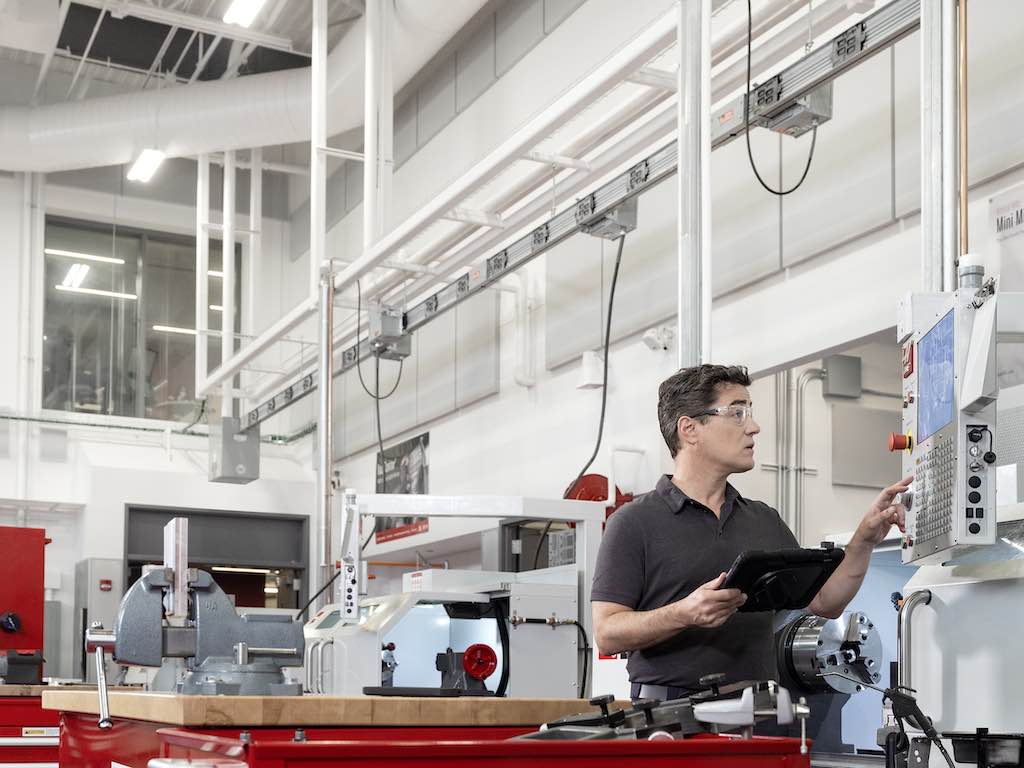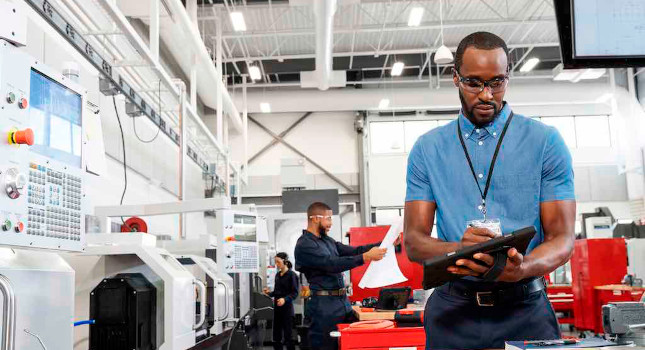Plan for the future with 5G, mobile edge computing
With the help of 5G and mobile edge computing, business owners, manufacturing facility managers and control engineers are experiencing the benefits of transforming traditional, manual processes into automated, efficient technological solutions.
Learning Objectives
- Implementing 5G and mobile edge computing is helping companies reap the benefits of automated technological solutions through digital transformation.
- AI and ML usage in assembly lines increases efficiency, reduces costs and improves accuracy.
- Inevitable revolutionary changes in the near future call for manufacturers to upgrade their facilities by implementing infrastructure changes across the board.
Edge Computing Insights
- 5G and mobile edge computing enable key business applications and supports near real-time operational insights, which can help users optimize data collection and storage to increase productivity.
- With 5G and mobile edge computing, manufacturers can operate separate smart assembly lines from one virtualized location and can reconfigure as needed, which increases their flexibility.
- 5G in manufacturing is already becoming a reality and companies that get ahead of the curve will be well-positioned for the future. Like automation, it is becoming a necessity, particularly due to the mass labor shortages in the industry.
Massive transformation is expected to change the way manufacturing facilities operate with the help of 5G in the coming years as manufacturers consider how leveraging technology and adapting to data-driven systems will be key to staying ahead of their competitive set. According to a recent study conducted by the Manufacturing Institute, 91% of manufacturers believe 5G connectivity will be important to the future of their business.
Factories going digital understand the hassle that comes with major facility changes. However, with the help of 5G and mobile edge computing, business owners, manufacturing facility managers and control engineers are beginning to experience the benefits of transforming traditional, manual processes into automated, efficient technological solutions.
5G and mobile edge computing enable key business applications to run on a network close to (if not located on) a work site, which decreases lag time and supports near real-time operational insights, which can help users optimize data collection and storage to increase productivity.
5G and mobile edge computing in action
Today, manufacturing floors have the basic technology needed to accomplish day-to-day activities but, with 5G and mobile edge computing, these activities can be significantly enhanced with the ability to process information at the edge of the network, which allows for greater control of tools, informs quicker decisions and helps identify issues earlier.
For example, one of Corning’s optical cable manufacturing plants has already tested how 5G and mobile edge computing can help with process control, monitoring and quality assurance. Corning can manage data from multiple sensors and identify issues on the factory floor faster than previously thanks to the low latency and high bandwidth provided by 5G and mobile edge computing. By moving computational power to the network edge, users can better harness factory floor data and interpret it faster to solve challenges close to real time.
Increasing throughput can be a challenge, and factories don’t benefit from slow-moving processes. 5G and mobile edge computing allows manufacturers to capture data, process and interpret it more efficiently and identify opportunities to evolve they may have not seen before. Manufacturers can then send commands back to associated devices, leading to a more efficient flow of materials on the factory floor.
By leveraging data analytics available on an edge computing infrastructure, manufacturers can maximize their assets’ performance, optimize operations, minimize downtime and gain end-to-end visibility to make faster, smarter decisions.

Figure 1: Beyond streamlining processes, manufacturing facilities can expect to see more accurate production and fewer disruptions. Courtesy: Verizon
Developing smart assembly lines
Having malleable tools allows manufacturers to transform what they are doing in an unexpected environment and improve operational efficiencies. As more assembly lines implementing technologies such as artificial intelligence (AI) and machine learning (ML), there’s a greater need for a network infrastructure that can support and enhance the configuration of smart assembly lines.
Manufacturing plants with multiple product lines often require multiple individual controllers for each stage, or pod, of an assembly line. With 5G and mobile edge computing, manufacturers will operate separate smart assembly lines from one virtualized location and then use this centralized control mechanism to reconfigure the assembly line while the product is coming down the line.
The current control infrastructure is a “closed shop,” which means it is difficult to adjust assembly line configuration, but this is poised to change with 5G and mobile edge computing integration. Increased network capabilities and flexibility open possibilities for manufacturers and control engineers to create more dynamic code, making the assembly line process more programmable, which improves productivity and revolutionizing the production process.
Business owners and contract manufacturers that implement this technology implemented in facility upgrades can see instant boosts in production and efficiency while lowering overhead costs.
Location accuracy enabled by 5G, mobile edge computing
Beyond streamlining processes, manufacturing facilities can expect to see more accurate production and fewer disruptions. Present-day manufacturers often suffer from Wi-Fi signal interference, especially in highly metallic environments. Low location accuracy and connectivity issues hinder the facility manager and control engineer’s ability to accurately track location. This is needed to keep operations running smoothly and ensure smart machinery like autonomous mobile robots (AMRs) and automated forklifts are where they need to be.
Location accuracy enabled by 5G and mobile edge computing should allow manufacturers to detect where near misses with a forklift and a worker, or a robot and a worker, occur. 5G is currently being tested indoors in these highly metallic environments so facility managers and control engineers will be able to accurately locate and operate AI and ML tools in near-real time from a remote location. 5G and mobile edge computing can enable near real-time interaction and a closed-loop control of AMRs and other ML tools, delivering reliability and safe production services within the factory.

Figure 2: 5G and mobile edge computing enhances manufacturing with the ability to process information at the edge of the network. Courtesy: Verizon
Start preparing now for 5G, edge computing
The manufacturing industry is set to see revolutionary changes within the next few years, and manufacturers should expect to include the initial infrastructure needed to implement a better network when it comes time to upgrade facilities. From the business owner to the facility manager to the production workers, all team members will see how 5G and mobile edge computing can help enable improvements in the future of business and day-to-day job operations by decreasing the rate of product defects, reinventing assembly line processes and increasing efficiency and location accuracy of AI and ML systems.
Nick DelRegno is director of applied research at Verizon. Edited by Morgan Green, associate editor, Control Engineering, CFE Media and Technology, mgreen@cfemedia.com.
MORE ANSWERS
Keywords: 5G, edge computing
CONSIDER THIS
How will 5G help your manufacturing, industrial or facility application?
ONLINE extra
See related stories linked below.
Do you have experience and expertise with the topics mentioned in this content? You should consider contributing to our CFE Media editorial team and getting the recognition you and your company deserve. Click here to start this process.


